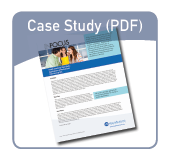 Practitioners routinely leave voicemail messages to persuade patients to enroll in a case management program, schedule an overdue A1C test, or come in for a follow-up visit. However, the approach and tone of the message can have a powerful influence on results. In this case study, we’ll look at how motivational interviewing (MI) can be used to significantly improve the odds of success.
Practitioners routinely leave voicemail messages to persuade patients to enroll in a case management program, schedule an overdue A1C test, or come in for a follow-up visit. However, the approach and tone of the message can have a powerful influence on results. In this case study, we’ll look at how motivational interviewing (MI) can be used to significantly improve the odds of success.
Setting: Case Management Program for mid-sized health plan
Objective: Improve engagement rates, defined as overall enrollment rates
Challenge: Staff are having trouble getting potential participants to answer the phone or return the call
Solution: Integrate motivational interviewing principles into voicemail messages
Outcome: Significant increases in contact with potential candidates for program and overall increase in enrollment rates
 Stacey R. is the team lead for the case management program and has taken on the initiative to increase engagement (enrollment) levels. Upon examination of the data, Stacey finds that a significant barrier is the inability to make contact with their target participants; in fact, case managers talk to only 30% of the people on their enrollment roster.
Stacey R. is the team lead for the case management program and has taken on the initiative to increase engagement (enrollment) levels. Upon examination of the data, Stacey finds that a significant barrier is the inability to make contact with their target participants; in fact, case managers talk to only 30% of the people on their enrollment roster.
Stacey decides to request assistance from the organization that had delivered motivational interviewing (MI) training for staff. Staff have been using the techniques successfully to increase patient engagement during health coaching calls and she would like to test the theory that these same principles could be applied to their initial outreach protocols.
After reading the program scripts for voicemail messages and listening to recorded messages, the consultant works with Stacey and her outreach team to tweak the methodology, the content and the tone of the current messaging protocol. Here is a summary of some of the changes made:
- Increase in number of voicemail messages left, but with a different message each time
- Staff practice putting aside script and leave messages more naturally and with more personality
- Principles of MI integrated into messages, such as support for autonomy, nonjudgmental presentation, empathy, coming alongside, and collaboration
- Last message stating clearly that this would be the last message left with the hope that the individual would feel free to call back anytime in the future

At the end of the three-month training program, Stacey noted that contact rate with potential participants had significantly increased, along with overall enrollment rates. Her staff concluded that MI is not only a great approach for patient calls, but a respectful, personable and patient-centered approach that should be used in all aspects of the program.




 Blake Andersen, PhD,
Blake Andersen, PhD,



